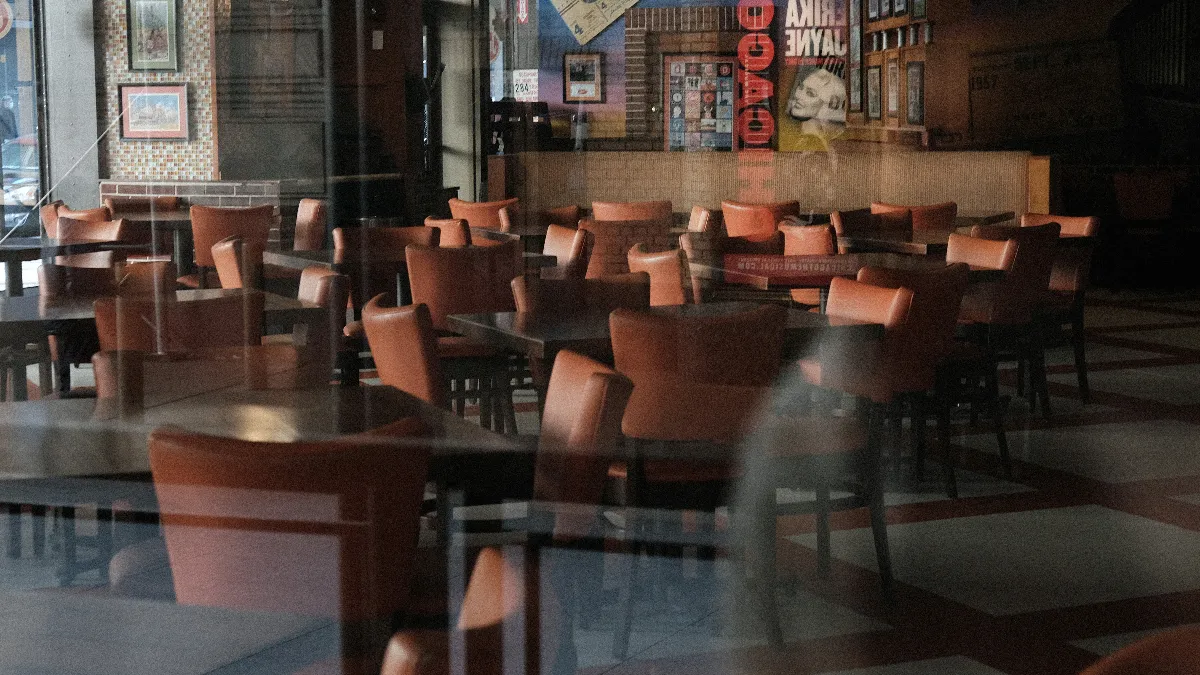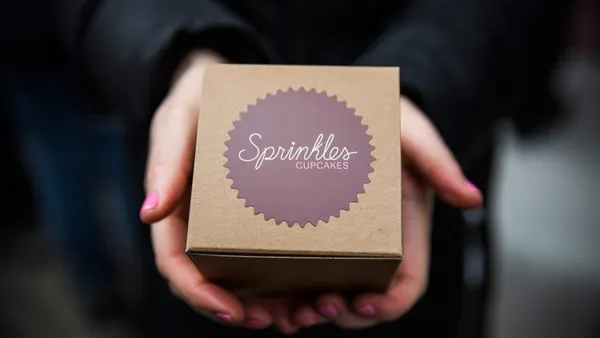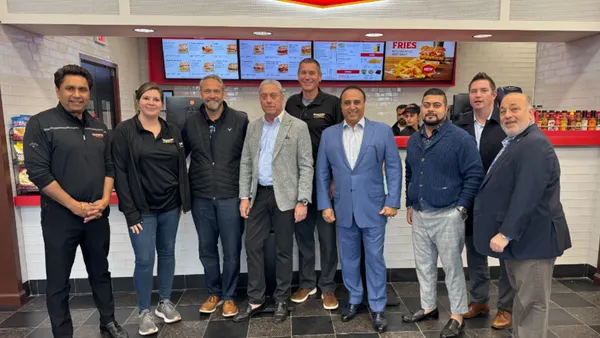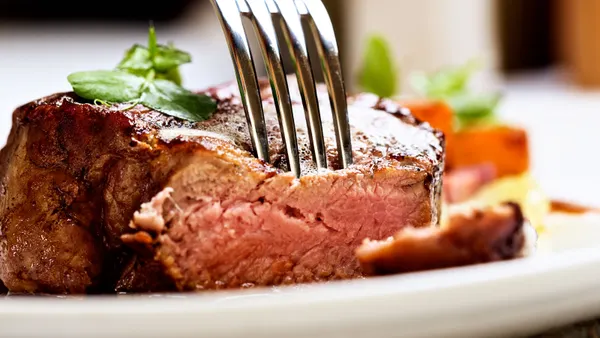Dive Brief:
- Thirty-nine percent of restaurants were unable to cover their rent payment for the month of June, according to a report from Alignable.
- This data marks an improvement from May's report, which showed that 49% of restaurant owners could not cover rent and a big jump from December, in which 61% couldn't pay rent. However, the number of businesses unable to pay rent in June increased in New York, Virginia, Arizona, North Carolina and Florida.
- Ongoing rent problems are exasperated by lack of revenue and traffic, as well as labor shortages and inflation, the research revealed. Fifty-five percent of small business owners say they can't fill necessary positions, marking a 5% increase from May.
Dive Insight:
Staffing shortages have caused restaurants to pull back on operating hours and reallocate funds to pay employees more than pre-pandemic levels, which is squeezing general and administrative expenses. Fifty-one percent of business owners said they're paying employees more than they did during COVID-19, according to Alignable's May rent report. Even with pay increases, restaurants continue to struggle filling positions.
Although foodservice and drinking establishments gained 186,000 jobs in May, according to the U.S. Bureau of Labor Statistics, restaurants are still 1.5 million — or 12% — below pre-pandemic employment levels. This is a particular challenge as the industry is showing strong signs of sales recovery. Yelp, for example, recorded its largest number of seated diners ever in May, surpassing pre-pandemic highs, while industry sales are just 2% below February 2020 levels.
The Alignable report shows that 71% of restaurant owners believe withholding the extra $300 unemployment benefit, as 25 states have already done, will correct labor shortages and likely expedite recovery.
Further, supply and inventory shortages are inflating operational costs. The cost of pepperoni, for example, has increased by 60% since April, while Starbucks has been short on offerings like oat milk, breakfast sandwiches and lemonade. Higher costs could also be deterring some customers. According to the Alignable report, 48% of small businesses said over half of their customers haven't returned.
Although restrictions are lifting and sales are returning, the labor and inflation pressures are hindering much of that progress. It also illustrates that relief funds dedicated to kick-starting the restaurant industry, including the Paycheck Protection Program and the Restaurant Revitalization Fund, have only gone so far, which is why the National Restaurant Association has encouraged states to establish their own restaurant grant funds. Landlords aren't likely to let restaurants keep kicking rent payments down the road after more than a year of doing so, and the industry could see more closures than it already has, even as the economy opens up.









